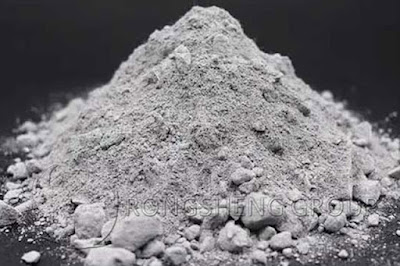How to Improve the High-Temperature Performance of Corundum-Mullite Castables?
Corundum-mullite refractory castable has the advantages of high softening temperature under load, good chemical stability, and thermal shock resistance. Silicon carbide is widely used as a high-grade refractory raw material for the lining material of industrial kilns such as blast furnaces and heating furnaces. Among refractory materials, alkali resistance, corrosion resistance, high thermal conductivity, thermal shock resistance, and crusting resistance have always been the focus. High-alumina mullite bricks containing an appropriate amount of silicon carbide have been widely used in the decomposition zone and transition zone of cement rotary kilns, and their service life is 3 to 4 times longer than that of high-alumina bricks. Foreign studies also believe that adding silicon carbide can reduce the formation of low-melting point feldspar mineral phases and make castables have certain self-healing properties.
 |
| Corundum-Mullite Castable |
Effect of Adding Silicon Carbide to the Properties of Corundum-Mullite Castables
Rongsheng Refractory Materials Manufacturer conducted experiments to study the effect of adding 0~5% (w) silicon carbide powder on corundum-mullite castables(https://www.refractoryprice.com/corundum-mullite-wearing-castable/). Among them, the effects of water demand, apparent porosity, linear change rate after burning, normal temperature flexural strength, normal temperature compressive strength, and high-temperature flexural strength are listed.
water demand
As the additional amount of SiC powder increases, the water demand of the sample gradually increases. This is mainly because SiC powder particles are flaky and have poor hydrophilicity. To achieve the same fluidity, more water needs to be added.
Apparent porosity and linear change rate after burning
As the additional amount of SiC powder increases, the apparent porosity of the dried samples shows a slight increasing trend, and the apparent porosity of the burned samples gradually decreases. As mentioned before, the water demand of the castable increases with the increase in the amount of SiC powder added, and the increase in the amount of water added leads to an increase in the apparent porosity of the dried sample. At high temperatures, the SiC surface is oxidized into a liquid phase SiO2 film, which promotes the sintering densification of the sample and is conducive to the formation of closed pores. In addition, the volume expansion effect of the oxidation of SiC to SiO2 and the volume expansion effect of the mulliteization reaction between SiO2 and alumina powder at 1100~1350°C will also crowd out the pores of the sample. The two work together to cause the apparent porosity of the burned samples to decrease with the increase in the amount of SiC powder added.
Apparent porosity of the sample after drying and burning. After being calcined at 1400°C for 3 hours, all samples shrank. As the additional amount of SiC powder increases, the linear shrinkage rate of the sample shows a decreasing trend. This is mainly because the volume expansion effect of SiC being oxidized to SiO2 and the volume expansion effect of the mulliteization reaction between SiO2 and alumina powder at 1100~1350°C can partially offset the post-burning shrinkage of the sample.
Room temperature flexural strength and room temperature compressive strength
As the additional amount of SiC powder increases, the room temperature flexural strength of the dried samples does not change much, and the room temperature compressive strength shows a slightly increasing trend. The normal temperature flexural strength and normal temperature compressive strength of the burned samples showed an increasing trend. The main reason why the normal temperature flexural strength and normal temperature compressive strength of the burned samples increased with the increase in the SiC powder addition was that the sintering densification degree of the samples increased. In addition, the mullite produced after SiC is oxidized to SiO2 and reacts with alumina powder in situ at 1100~1350°C also has a reinforcing effect on the sample.
High-temperature flexural strength
High-temperature flexural strength of the sample after burning. The high-temperature flexural strength of sample T2 is significantly greater than that of sample T1. The high-temperature flexural strength of samples T2, T3, and T4 also increased sequentially. This is because the increase in sintering densification and the formation of mullite can not only improve the normal temperature strength of the sample but also improve the high-temperature strength of the sample.
Add ≤5% (w) SiC powder to the corundum-mullite castable. As the additional amount of SiC powder increases, the water demand of the castable increases slightly, the linear shrinkage after burning decreases, and the apparent porosity of the sample after burning decreases. After burning, the normal-temperature flexural strength, normal-temperature compressive strength, and high-temperature flexural strength of the sample are improved.



评论
发表评论